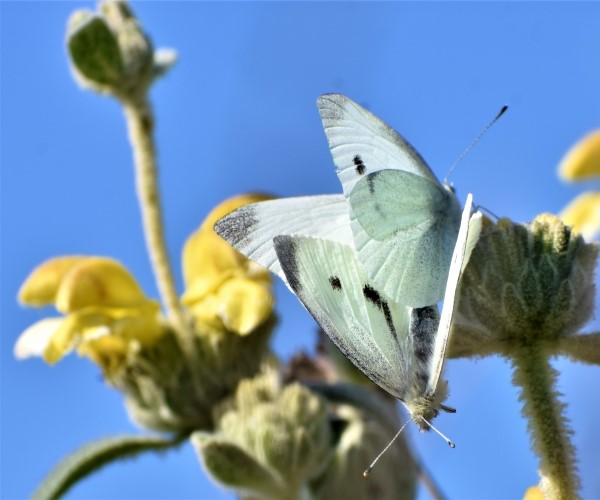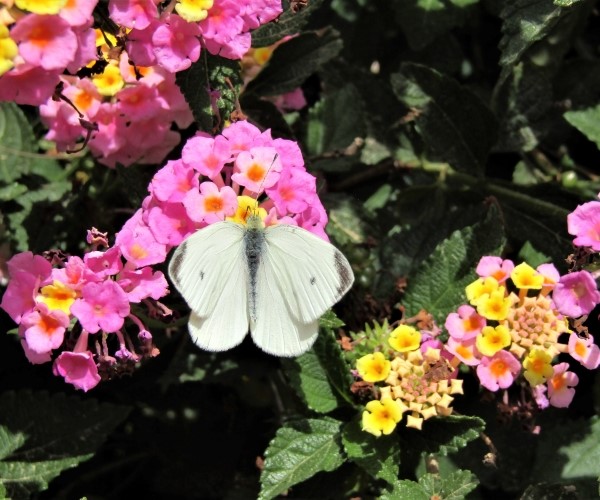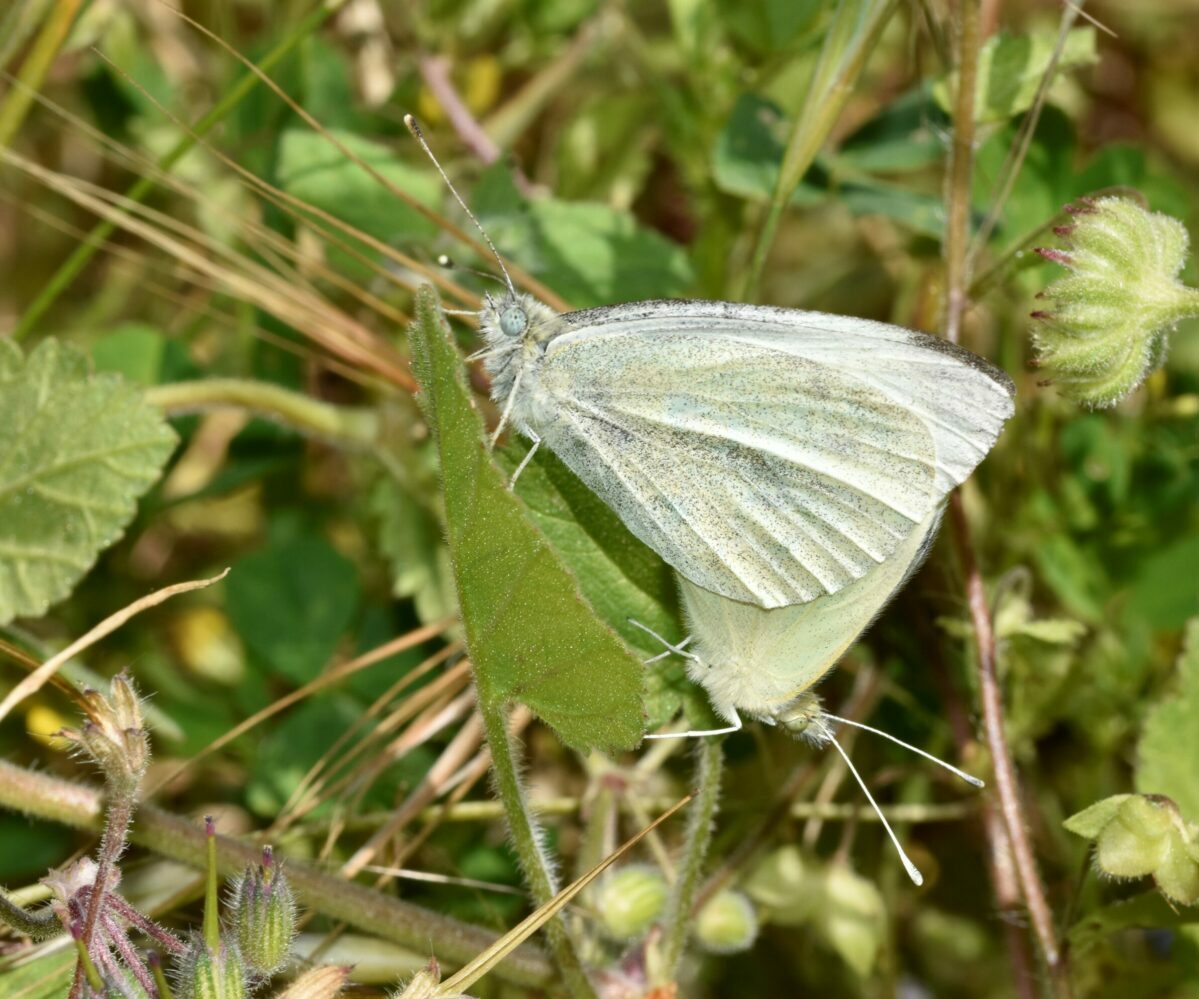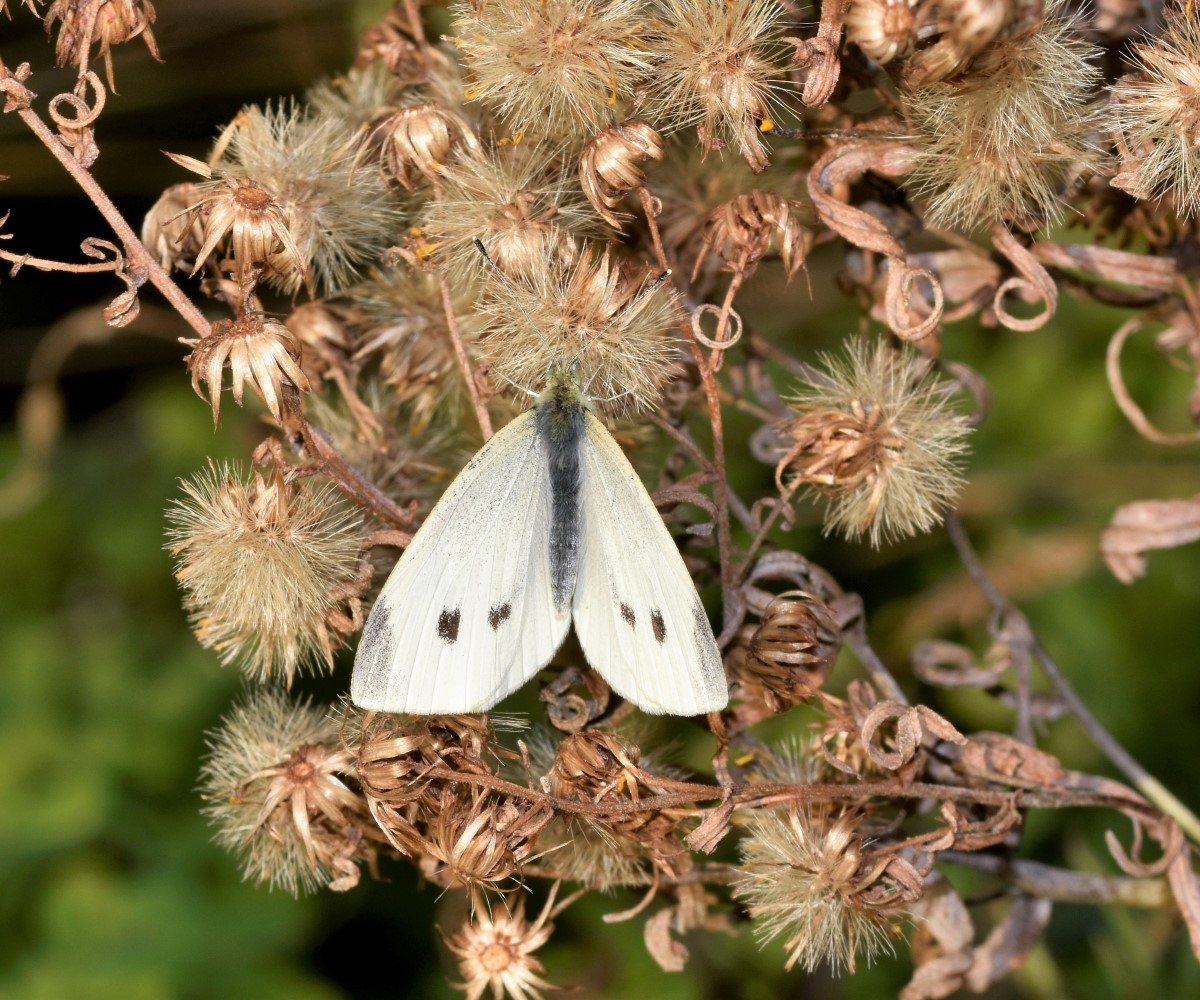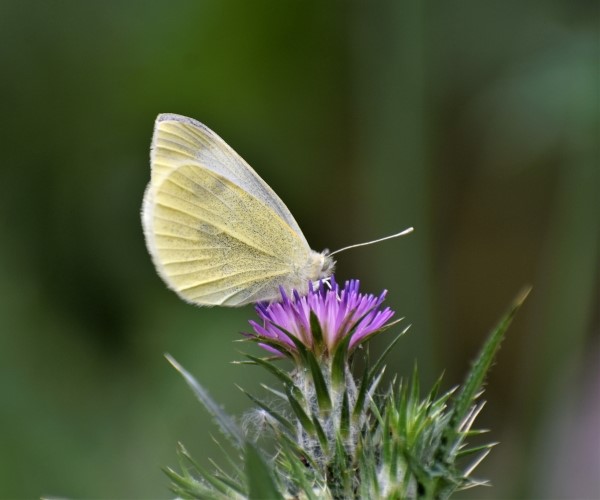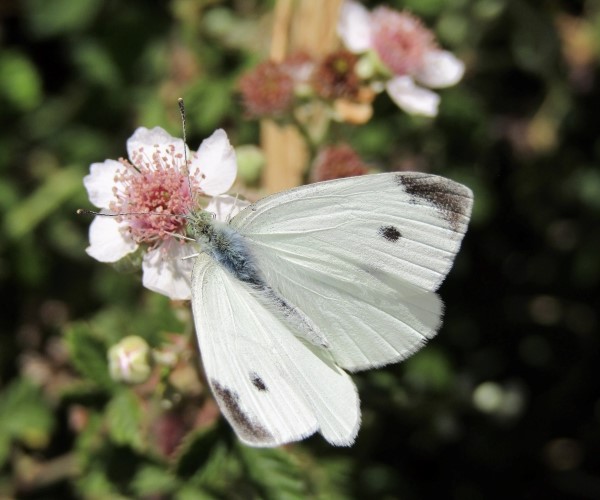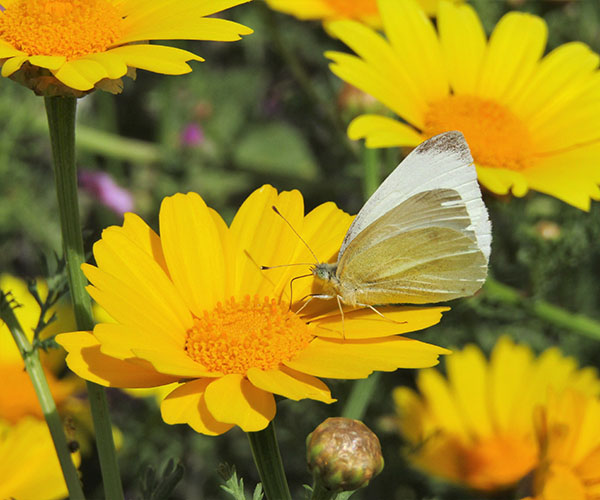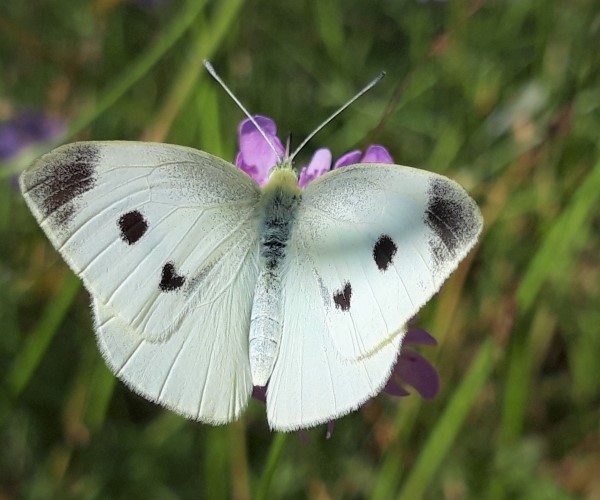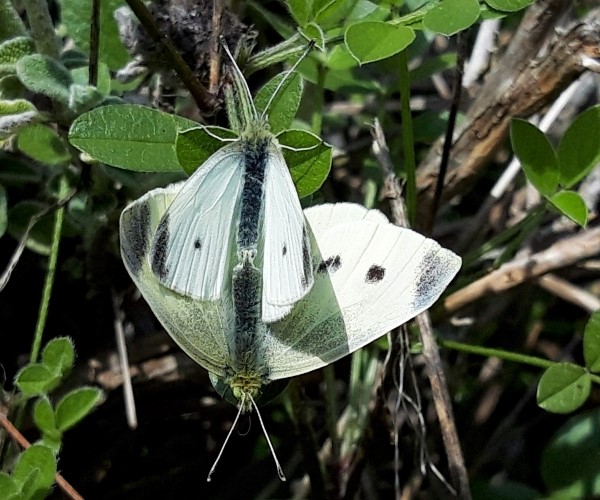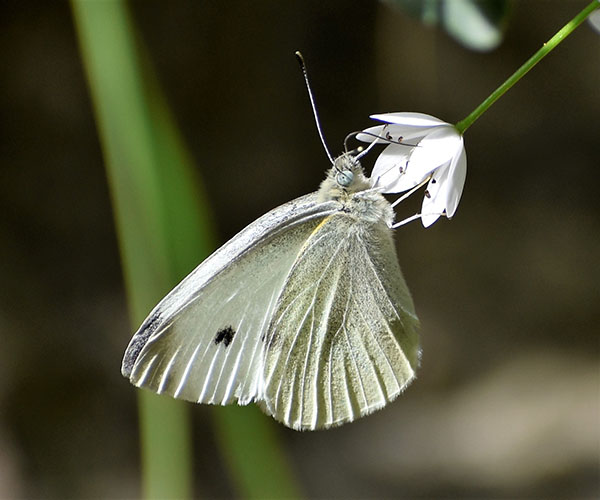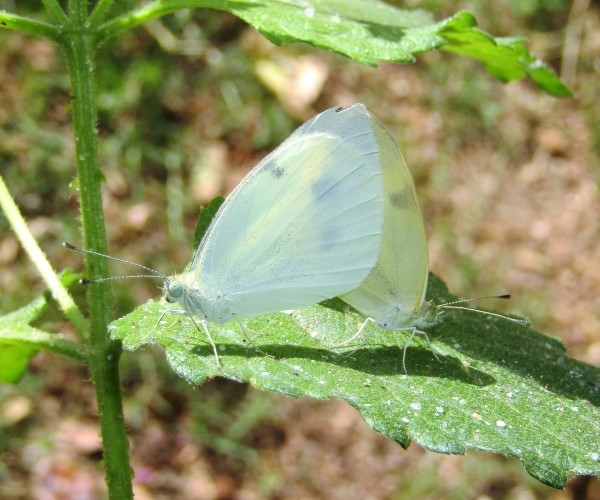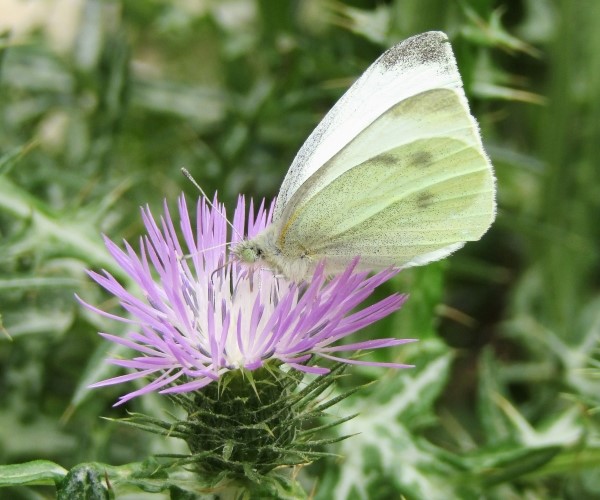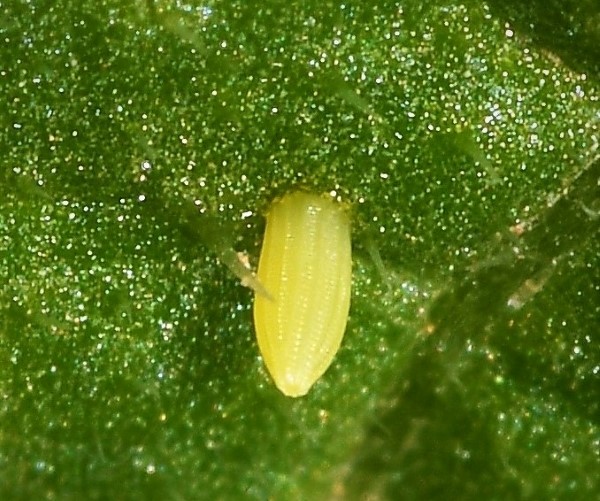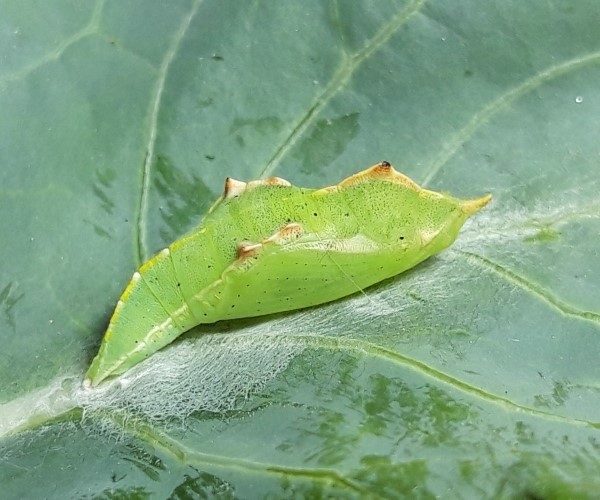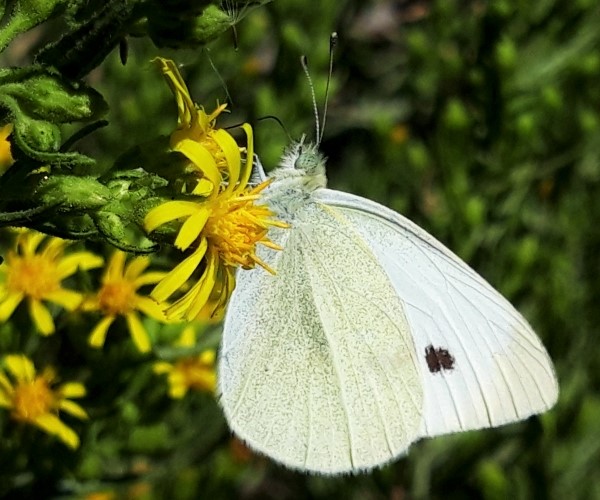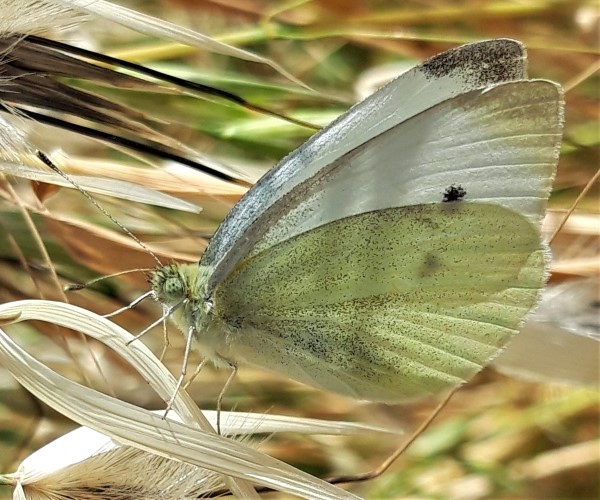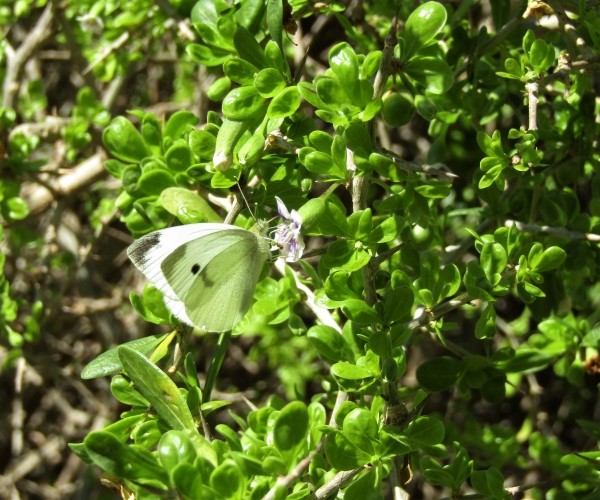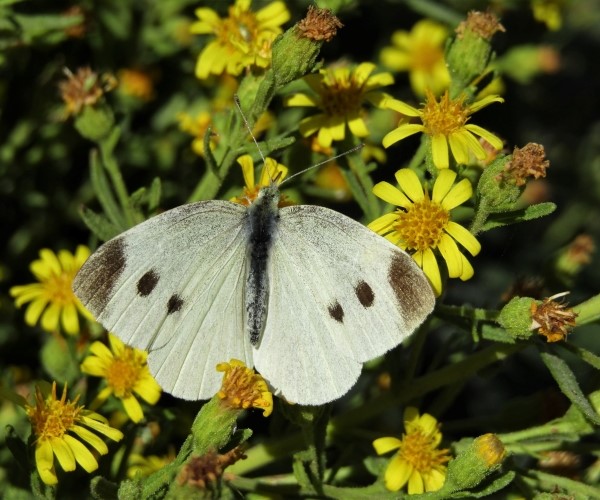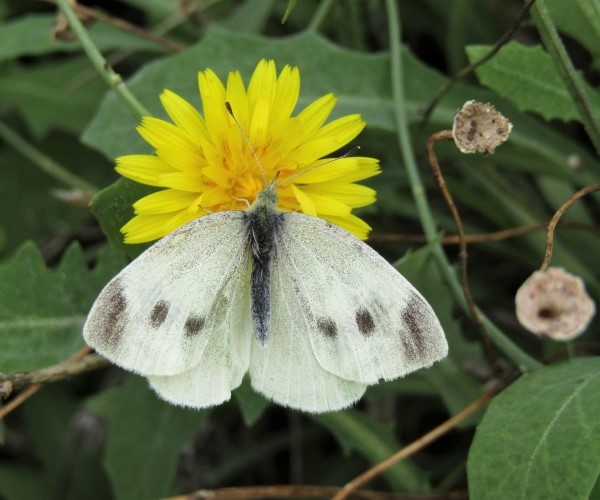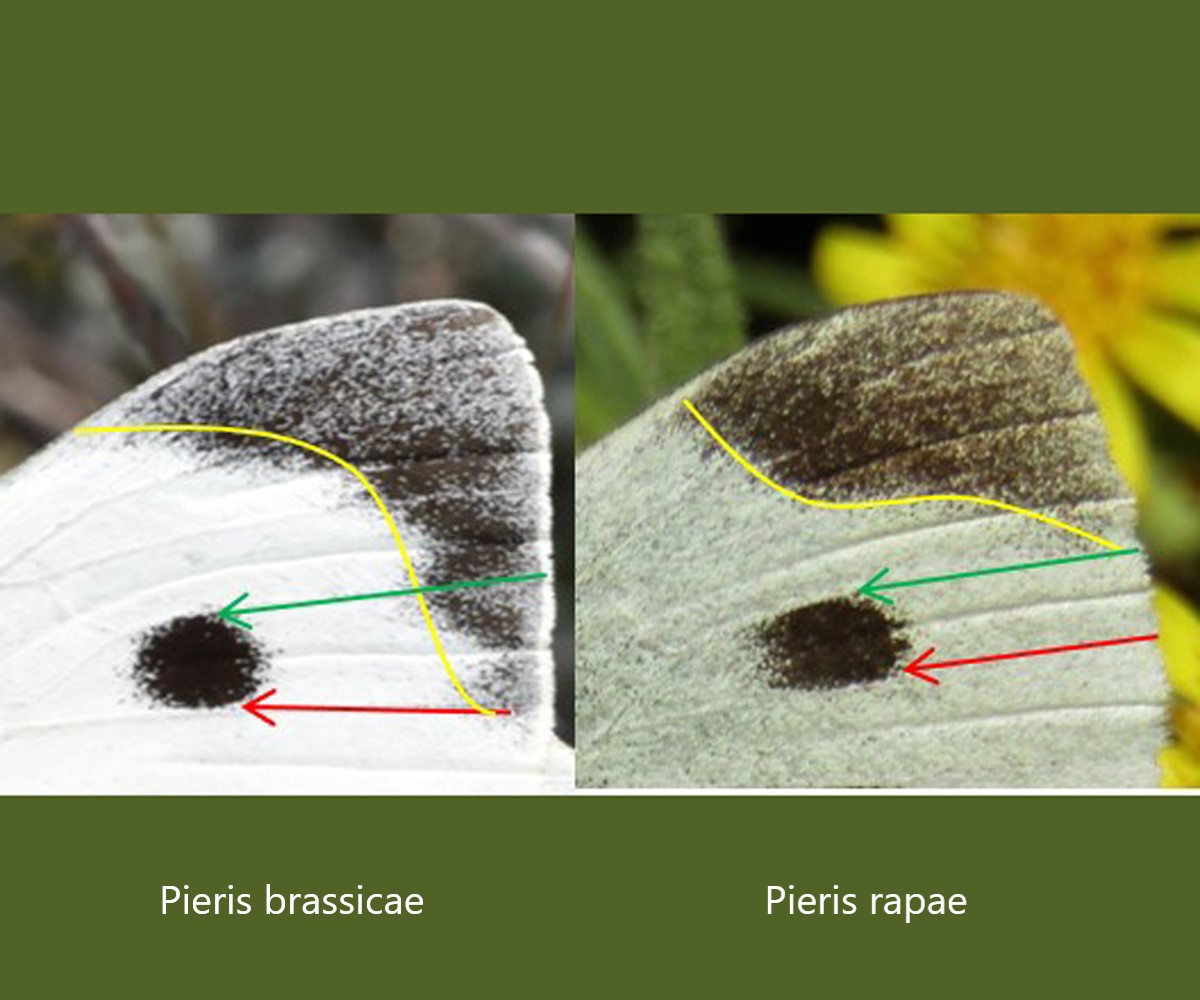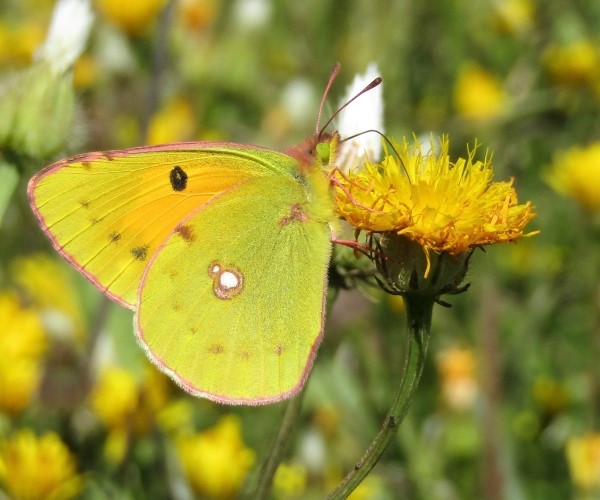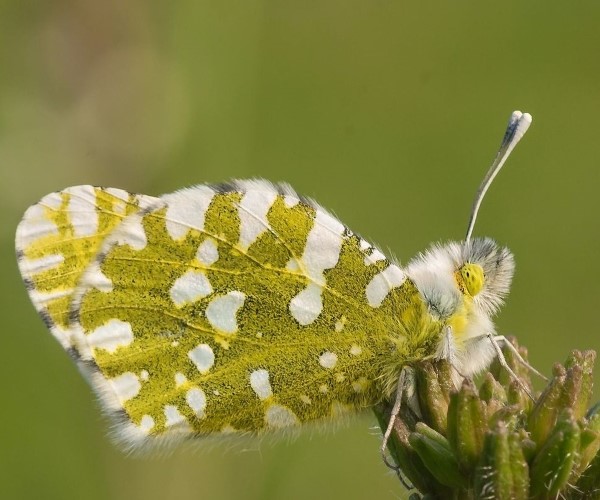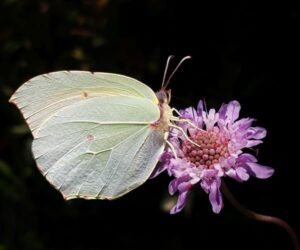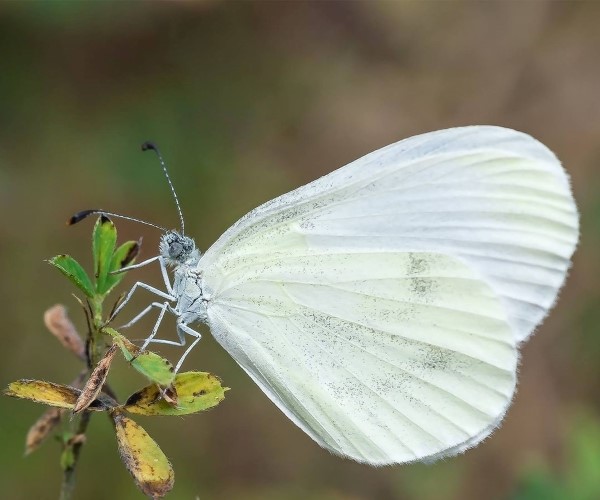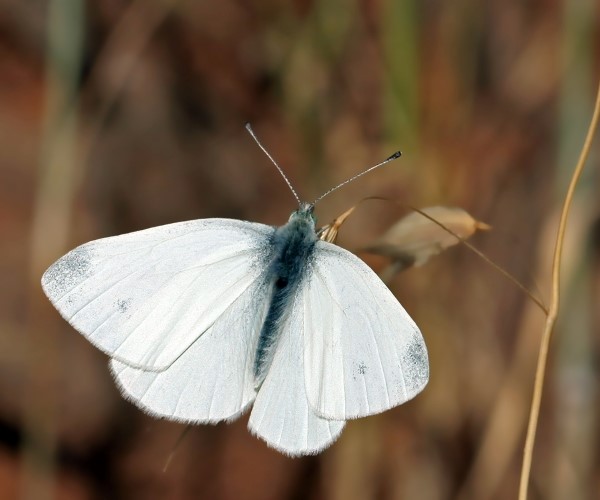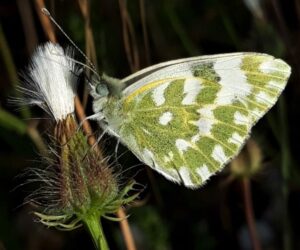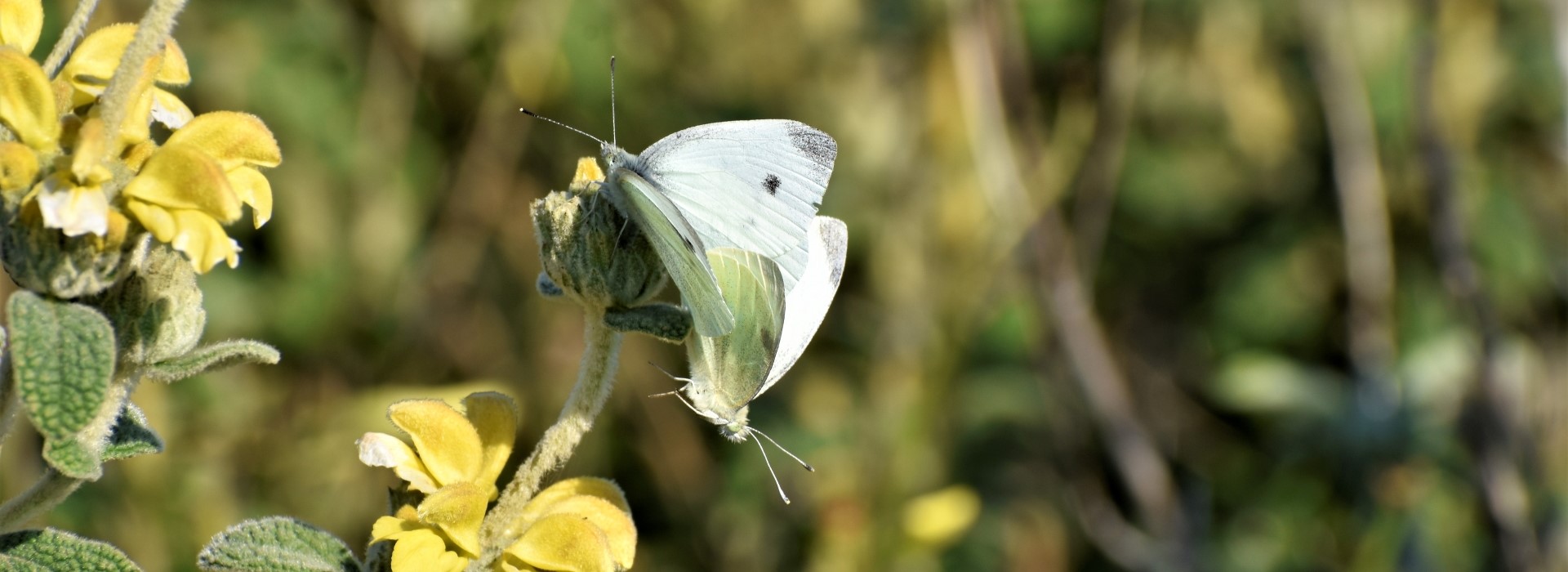
Pieris rapae mating, Crete - photo © K. Bormpoudaki
Pieris rapae
BUTTERFLY INFO
Pieris rapae is a butterfly of the family Pieridae on the island of Crete, Greece.
Scientific name
Pieris rapae (Linnaeus, 1758)
Common name
Small White
Classification
Family: Pieridae > Subfamily: Pierinae > Tribus: Pierini > Genus: Pieris
Wingspan
Male to female: 45-50 mm
Appearance
The general color of the wings is white for both sexes.
On the forewing, on the upper side, the male has a black apical patch, one black spot, and another one paler in the postdiscal area, whereas females have two intense black spots. The underside is similar to the upperside, but with yellow colors near the apex.
On the hindwing, on the upper side, there is a small triangular mark, whilst the underside is nearly yellow-colored with grey shades for males and pale yellow to white colored with grey shades for females.
The next generations appear slightly different with more intense black marks and black colors near the apex, especially in females.
Habitat
Pieris rapae in Crete can be found in open land, especially agricultural land, cities, seaside, rocky slopes, gardens, etc.
Behavior
Early in the day, or overcast conditions, basks with the wings half-open. It opens the wings when cloudy or in low temperatures and closes when sunny or in high temperatures.
Food plant
The larva feeds on Brassicaceae, i.e. Brassica oleracea, Sinapis arvensis, Raphanus raphanistrum, Cakile maritima, etc. It also feeds during autumn on Capparaceae, i.e. Capparis spinosa.
Flight period
The butterflies fly in 3-4 generations, all year long.
| Jan | Feb | Mar | Apr | May | Jun | Jul | Aug | Sep | Oct | Nov | Dec |
Remarks
The females deposit the eggs singly on the host plants. After 4-8 days, the eggs hatch, and the larvae feed and develop through five instars in 10-14 days. When not feeding, the larvae lie along the ribs on the underside of the leaves.
The Pieris rapae adults are similar in both appearance and behavior to Pieris brassicae; however, the latter is generally much bigger, and the black apical patch on the forewing upperside, is more along the costa of the wing, than along the margin (see bottom-right photo)..
Status*
Least Concern (LC)
Pieris rapae Distribution Map
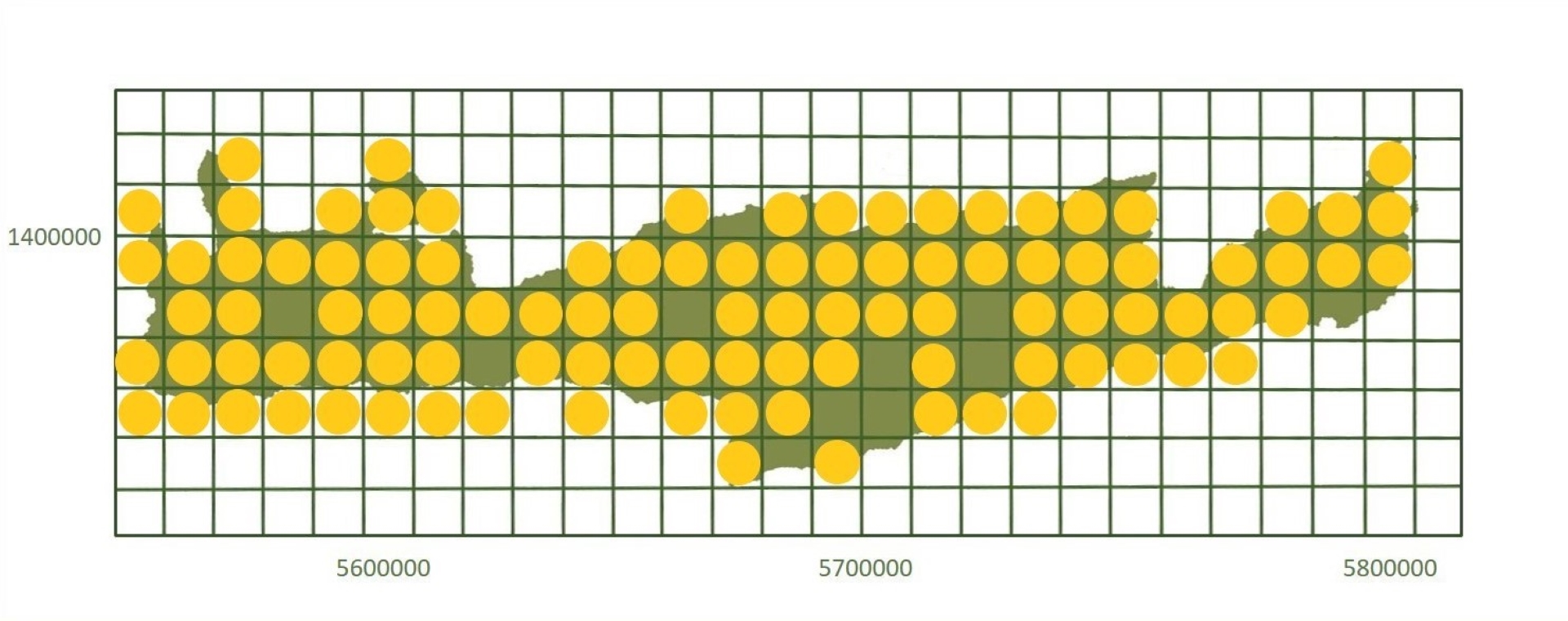
*based on http://www.pamperis.gr/THE_BUTTERFLIES_OF_GREECE/MAPS.html, updated Dec 2025 (ETRS89, grid 10X10 km)

